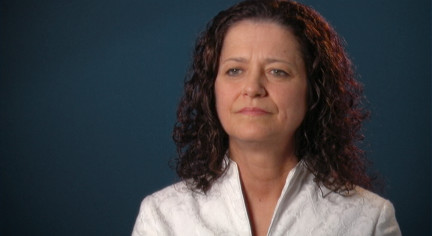The Law Project for Psychiatric Rights (PsychRights®) announces the unsealing (1/25/2010) of a major Medicaid Fraud lawsuit against psychiatrists, their employers, pharmacies, state officials, and a medical education and publishing company for their roles in submitting fraudulent claims to Medicaid.
(http://psychrights.org/pr/100125MatsutaniUnsealingNR.pdf)
The defendants are:
Osamu H. Matsutani, M.D.
William Hogan, Commissioner Of the Alaska Department Of Health And Social Services
Tammy Sandoval, Director Of The Alaska Office Of Children’s, Services
Steve McComb, Director Of The Alaska Division Of Juvenile Justice
William Streur, Director Of The Alaska Division Of Health Care Services
Juneau Youth Services, Inc.
Providence Health & Services,
Elizabeth Baisi, M.D.
Ruth Dukoff, M.D.
Charter North Star Behavioral Health System
Kerry Ozer, M.D.
Claudia Phillips, M.D.
Southcentral Foundation
Sheila Clark, M.D.
Hugh Starks, M.D.
Lina Judith Bautista, M.D.
Heidi F. Lopez-Coonjohn, M.D.
Robert D. Schults, M.D.
Mark H. Stauffer, M.D.
Ronald A. Martino, M.D.
Irvin Rothrock, M.D.
Jan Kiele, M.D.
Alternatives Community Mental Health Services, D/B/A Denali Family Services
Anchorage Community Mental Health Services
Lucy Curtis, M.D.
Fairbanks Psychiatric And Neurologic Clinic, Pc
Peninsula Community Health Services Of Alaska, Inc.
Bartlett Regional Hospital Foundation, Inc.
Thomson Reuters (Healthcare), Inc.
Wal-Mart Stores, Inc.
Safeway, Inc.
Fred Meyer Stores, Inc.
Law Project for Psychiatric Rights v. Matsutani, et al., United States District Court, District of Alaska, Case No. 3:09-cv-0080-TMB.
The lawsuit, which was filed on April 27, 2009, and required to be kept under seal (secret) until now, is brought under the federal False Claims Act, which authorizes private parties to bring fraud actions on behalf of the Government. These cases are also called “whistleblower suits” or “qui tam” actions, and those who file them are entitled to a share in the recovery, if any. Each offending prescription carries a minimum penalty of $5,500.
The Complaint walks through the lack of science supporting the practice and the methods used by the pharmaceutical industry to induce psychiatrists to improperly prescribe these drugs. “Even though the drug companies have been using these methods to induce psychiatrists to prescribe these drugs, it is the psychiatrists’ responsibility to base their decisions on the facts, not drug company marketing,” said Mr. Gottstein, continuing, “the uncritical acceptance of pharmaceutical company hype represents a massive betrayal of trust by the psychiatrists prescribing these drugs to children and youth.”
PsychRights has also developed a streamlined model Qui Tam Complaint for use around the country. See, PsychRights Launches Campaign Against Medicaid Fraud With Model Lawsuit, July 27, 2009. The model Qui Tam Complaint is drafted for former foster youth to bring the lawsuits and receive the whistleblower’s share of the recoverey, but anyone with knowledge of specific offending prescriptions, such as parents and mental health workers, can bring these suits.
Last fall, Mr. Gottstein gave talks at two national conferences, the National Association for Rights Protection and Advocacy (NARPA), and the International Center for the Study of Psychiatry and Psychology (ICSPP), where he presented on how to bring and conduct these cases. Mr. Gottstein is also gave a presentation in New York City, February 2nd following oral argument in Lilly v. Gottstein.
Mr. Gottstein indicates a number of these cases are percolating around the country. In one that is not as far along as some others, Ted Chabasinski, a Berkeley, California, lawyer, is seeking a former foster youth as a client to bring such a lawsuit in the Bay Area. Any former foster youth in the Bay Area who was given psychiatric drugs within the last 6 years can call Mr. Chabasinski at (510) 843-6372 to talk to him about bringing such a case. “Foster children are singled out for psychiatric drugging because they and their foster parents have almost no legal protections and no way they can refuse these damaging drugs,” says Mr. Chabasinski, who as a foster child, was electroshocked at the age of six as part of an experiment involving hundreds of foster children.
While PsychRights and Mr. Chabasinski are not bringing these cases for the money, such cases represent a tremendous financial opportunity for attorneys to do well by doing good.
“These are about as open and shut as cases can get,” said Mr. Gottstein, “it is Medicaid fraud to cause or submit prescriptions to Medicaid for reimbursement if they are not for a medically accepted indication. End of story.” PsychRights has developed a Medically Accepted Indications Chart showing what is allowable for common psychiatric drugs. Every other use of these drugs in children and youth and submitted to Medicaid is fraudulent. PsychRights conservatively estimates that at least half of psychotropic drug prescriptions to children and youth submitted to Medicaid are not for medically accepted indications and therefore fraudulent.
The Law Project for Psychiatric Rights is a public interest law firm devoted to the defense of people facing the horrors of forced psychiatric drugging and electroshock. PsychRights is further dedicated to exposing the truth about psychiatric interventions and the courts being misled into ordering people subjected to these brain and body damaging drugs against their will. Extensive information about these dangers, and about the tragic damage caused by electroshock, is available on the PsychRights web site: http://psychrights.org/.
James B. (Jim) Gottstein, Esq.
President/CEO
Law Project for Psychiatric Rights
406 G Street, Suite 206
Anchorage, Alaska 99501
USA
Phone: (907) 274-7686) Fax: (907) 274-9493
jim.gottstein[[at]]psychrights.org
Like this:
Like Loading...


